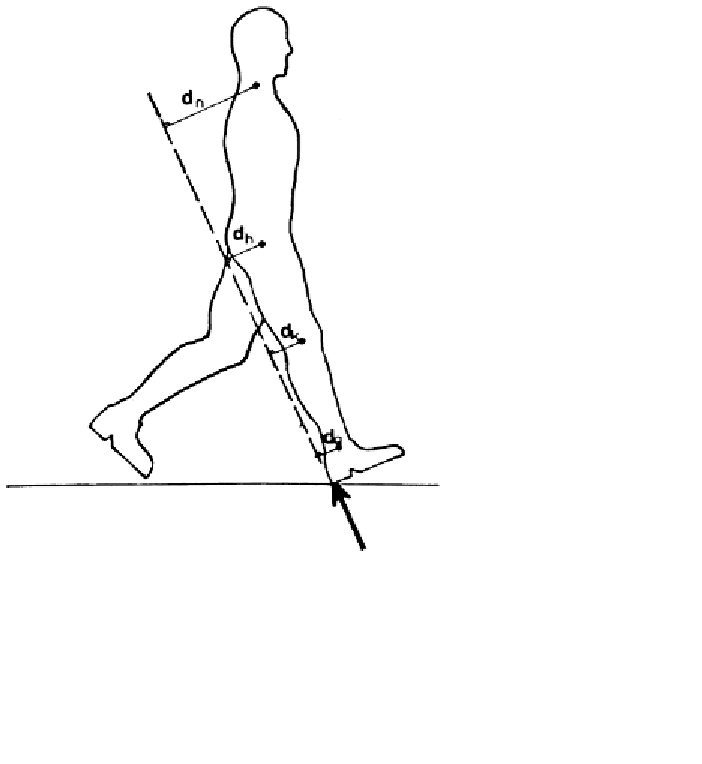Biomedical Engineering Reference
In-Depth Information
5.2.7
A Note about the Wrong Way to Analyze Moments of Force
In the 1980s, an erroneous technique has evolved and is still in use in the
clinical area in spite of technical notes and letters to the editor. This technique
is referred as the FRFV (floor reaction force vector) approach and calculates
the moments as depicted in Figure 5.15, which shows the ground reaction
vector directed posteriorly during early stance. The FRFV approach calculates
the moment to be equal to the magnitude of the vector times the perpendicular
distance between the joint axis and the vector. Thus, the ankle moment would
be described as plantarflexor; at the knee, it would be flexor; and it would be
extensor at the hip. The folly of this technique becomes obvious if we extend
the vector to calculate the moment of force at the neck. We would estimate
an extensor neck moment several times larger than any moment calculated
at the ankle, knee, or hip. There are three errors or shortcomings in the
technique.
Figure 5.15
Projection of the ground reaction force vector that is used erroneously
to predict the joint moments of force. The distance of the projection from the relevant
joint center to the vector times the magnitude of that vector gives the net joint moment
using FRFV approach. (Reproduced with permission of R. Wells.)










Search WWH ::

Custom Search